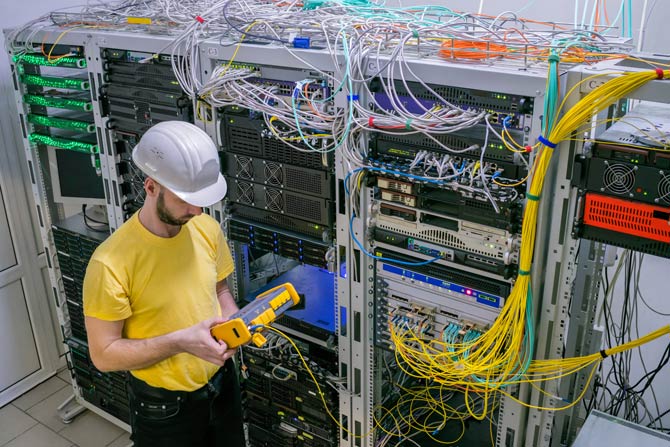
Whether for mobile or stationary internet use: stable internet connections should be available throughout Europe. In order for the EU Commission to actually achieve this goal, more telecommunications providers could merge across national borders in the future.
With advancing technologies at the cutting edge of technology
From the gigabit network to broadband to the digital network: these topics affect the whole world.
Modern network infrastructures, service software or edge computing are an integral part of tomorrow's infrastructure base.
A good and modern infrastructure is also important in order to always be up to date with advancing technologies.

#268784160 – stock.adobe.com
Measures for a more efficient network
An important basis is the 40-page white paper by the EU Internal Market Commissioner Thierry Breton, which contains a wide range of suggestions from experts from business, politics and government authorities. The suggestions include ideas for benefiting from an even more powerful network in the future. High-performance networks are an important technical basis for using digital and data-driven applications even better in the future. These include, among other things, comprehensive telemedicine, safe self-driving cars or the use of AI for climate protection or green transformation.


#502367489 – stock.adobe.com
Big ambitions
The ambitions are great. But on the other hand, it is on the agenda that the network repeatedly encounters national borders. These limitations are noticeable in wide areas. For example, travelers on tours through Europe quickly notice that there are always gaps in connection to the Internet at borders.
Across Europe there are a total of 27 national markets whose network architecture, extent of network coverage, frequency markets and frequency management differ significantly from one another.
These fragmentary regulations also create various economic options for Europe.
Cross-border mergers as an important goal
The Commission's main objective is to promote cross-border mergers between multiple telecommunications providers across Europe. There is also talk of cross-border offers so that large investments are worthwhile. In order to achieve these core goals, the EU has now been able to agree on initial plans. The French telecom giant Orange will compete with its Spanish competitor Másmóvil in the future. In advance, the EU spoke out against larger takeovers in order to enable Europe-wide competition.


#301195719 – stock.adobe.com
Strategic infrastructures for cabling
Cabling plays another important role in the white paper. According to current information, around 99 percent of data traffic is carried using submarine cables. All of these cables are used for different purposes, ranging from global financial movements to military operations to daily communications.
An important goal is therefore to create a strategic infrastructure that meets the increasing demand for bandwidth and withstands all major security threats.
EU Commissioners also agree that improved security and maintenance are needed. There is also a need for more docking points, which could be created, for example, on the Mediterranean coast, on the Irish and Danish coasts or around the Baltic Sea.
Merge multiple goals
The white paper contains these and many other solutions to secure the future of connectivity within Europe. Ultimately, the measures aim to bring all important goals together. This step is necessary to create a cross-border marketplace for telecommunications companies as well as a cheap and reliable one across Europe. One of the most important goals of the digital strategy within the EU is that by 2030 all EU households should receive the World Wide Web at gigabit speeds. Currently, 80 percent of all Europeans benefit from the advantages of the 5G mobile communications standard. There is a clear need to catch up when it comes to fiber optic expansion. With nationwide coverage of 19 percent to date, this proportion is currently well below the EU-wide average of 56 percent.
Source: https://www.blog.de/verbessertes-internet-fuer-europa/


